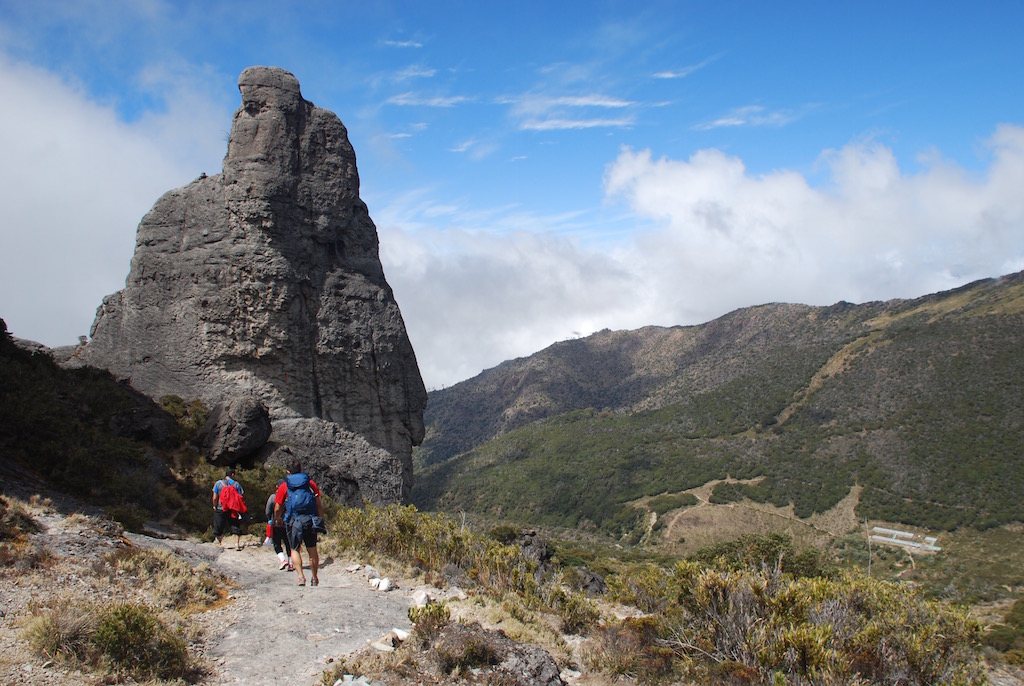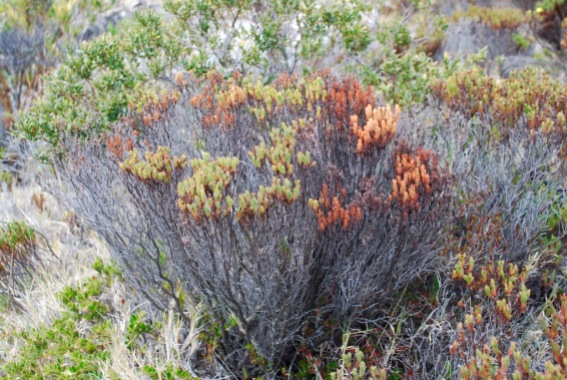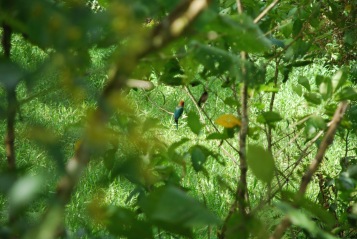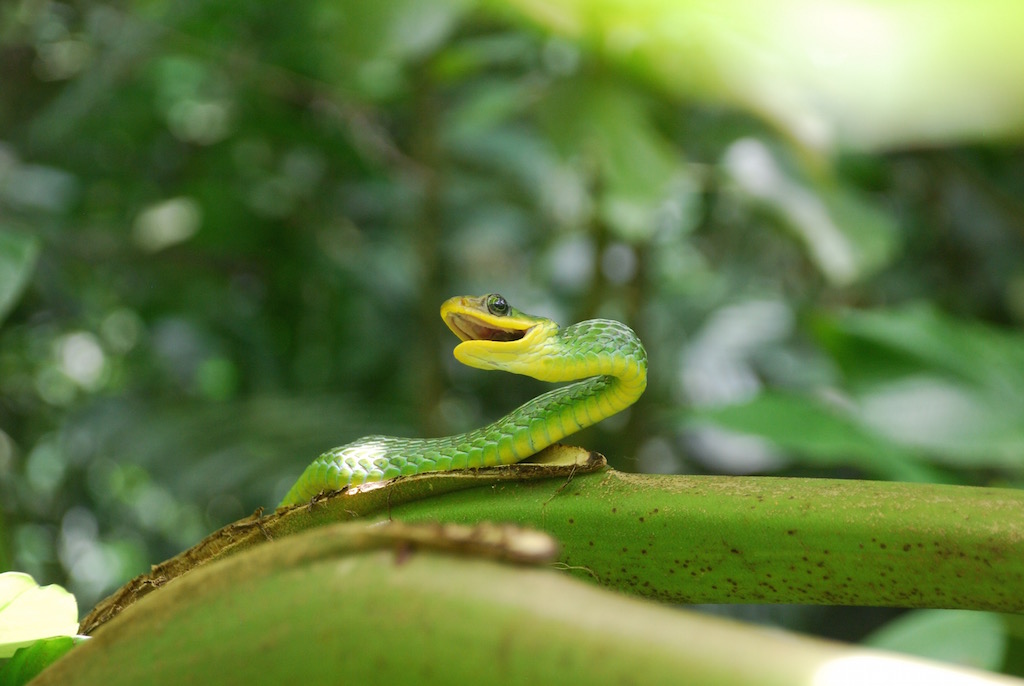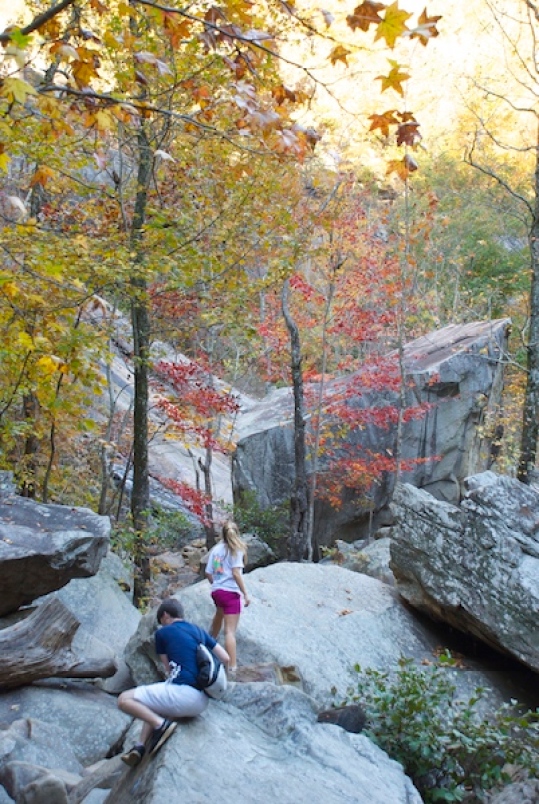I came to Costa Rica to escape frost.
It was February, and I had left behind a Massachusetts in which every particle and every follicle was laced with frost, brimming with frost, encrusted with frost. But here I stood in Costa Rica with my friends, gawking at…frost.
I was not impressed.
But when you’re traveling in Costa Rica with Costa Ricans, frost has a novelty all of its own. You don’t expect a country 10 degrees north of the Equator to be reaching south of zero degrees in temperature. Which brings us back to why at 4am I was gathered with my friends around this mound of frosted moss, photographing it, posing with it, and squealing with glee about it.

Lest you be concerned, seeing frost was not our primary mission (well, I’ll speak for myself). We were summiting Cerro Chirripó, the tallest peak in Costa Rica at 3,821 meters. The most popular trail, which begins in San Gerardo de Rivas, is well-marked, though steep and somewhat strenuous at parts. SINAC (National System of Conservation Areas, in English) limits the number of permits available to enter Chirripó National Park each day, so for much of the hike, we marched to the tune of our own haggard breathing. And the majority of those people we did encounter were ticos, which made my corazón happy. Having lived over two years in Costa Rica, hiking Chirripó had been fidgeting on my bucket list – and I had the most sublime time crossing it off.
Timetable
Chirripó National Park encompasses five ecosystems, and should be a multi-day experience for anyone who actually wants to enjoy it (biased opinion). Exhibit A: We met a deranged couple in San Gerardo who ascended and descended all in one day, but they candidly admitted they felt like they were dying. Here’s our timetable, which I’d recommend for maximum enjoyment of all there is to see at the top:
Day 1: Travel to San Gerardo.
Travel to San Gerardo de Rivas & check in with SINAC offices by 4pm. Night in San Gerardo de Rivas.

Day 2: Hike San Gerardo – Crestones Base Camp.
Begin climb at 3am from San Gerardo to Crestones Base Camp (we totaled 7.5 hours – average time is 8 hours). Night at Crestones.
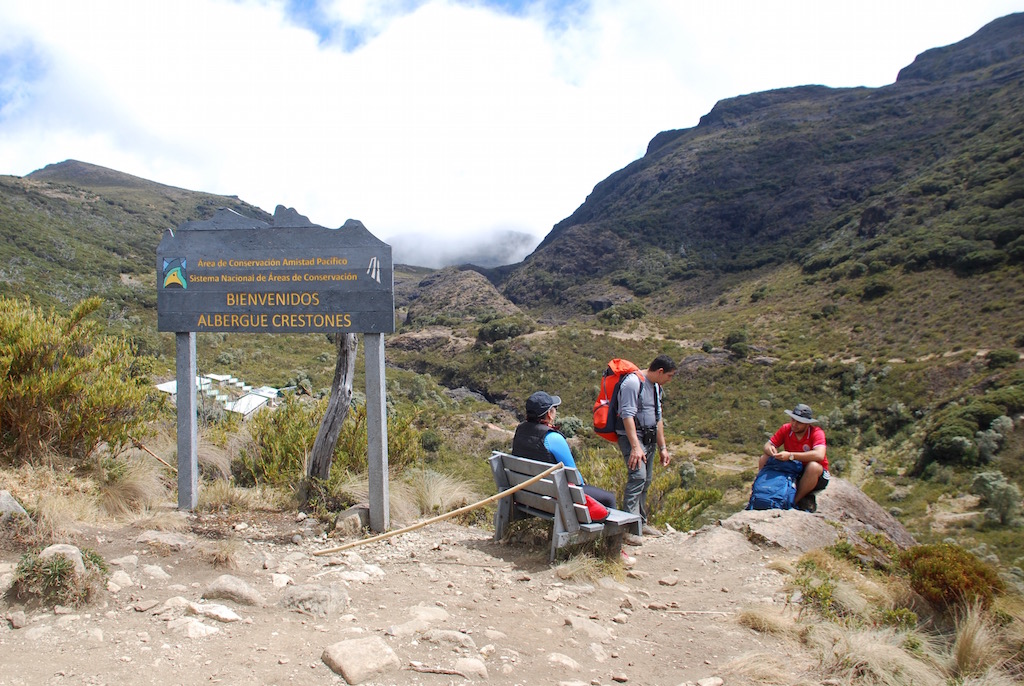
Day 3: Summit Cerro Chirripó for the sunrise…
Begin ascent at 3am from Crestones Base Camp to see sunrise on Cerro Chirripo (approximately 2 hours hiking). 
…& then hike to Los Crestones.
After sunrise, hike to Los Crestones, via Valle de los Conejos. Including the sunrise hike, a total of 8 hours hiking. Night at Crestones Base Camp.
Day 4: Descend from Crestones Base Camp – San Gerardo.
Descend from Crestones Base Camp to San Gerardo (~4.5 hours for our group).
Sights from the summit
Where to stay
San Gerardo de Rivas (night before ascent)
We stayed at Hotel Urán, which provided perfectly good, clean, basic accommodations. A private room with bunk beds and shared bathrooms cost us ~$21 each, and the hotel included breakfast – which they kindly packed and bagged for us the night before our ascent to eat along the way. The best thing about this hotel was definitely the location – the entrance to Parque Nacional Chirripó is maybe 1 minute walking up the road. Casa Mariposa, located right next door, also has a great location (though a bit pricier). If you’re staying elsewhere, remember to inquire about what transportation is available to get you to the trailhead (especially if you’re beginning your ascent early).
Crestones Base Camp
This’ll make it easy – this is your only lodging choice. Clean, simple, chilly. Rooms of two bunk beds apiece (hostel-style), shared bathrooms, and ICE COLD SHOWERS (<– yes.). Make sure you buy meals in advance. Hiking around Chirripó will take your butt and freeze it and if you do not sign up to eat hot meals I do not know how you think you’re going to thaw it. The meals are expensive…but remember that horses and humans lugged your uncooked calories up the mountain on their backs and then complain.
Tips

- Start booking your spots 6 months in advance. The number of permits granted to enter Chirripo is very finite – and this is a good thing, as the park maintains its natural integrity and you don’t have to throw elbows. During the dry months, which will give you the best views, spots sell out almost the day they’re made available – which is six months in advance.
- Make sure to arrive in San Gerardo to check in BEFORE 4:00 PM the day before you plan to ascend. You’ll receive tickets and passes, without which you won’t be allowed into the park early the next morning.
- Begin your ascent early. For us, the first three kilometers were some of the most difficult – but would’ve been more difficult (mentally) if we’d been able to see them. By starting at 3:00 AM and lighting our way with flashlights, and walking while practically asleep, these kilometers faded away like a really strenuous dream.
- See the sunrise on Cerro Chirripó. It’s truly, deeply, absolutely worth it. We left Crestones at 3:00 AM, and walking at a brisk clip, summited the final bit just as the sun started tinging the sky with light.
- Y’all…it’s COLD. At Crestones, it was below freezing when we left for our sunrise hike. Bring those gloves. Those hats. Those layers. Do it. You’re welcome.
- The air is thinner. My abode has me living right at sea level, so I felt the few thousand meters of elevation in my lungs; it felt like no breath was quite deep enough. For me, though, this passed after a day.
- Don’t count on having wifi or service at Crestones. I didn’t manage to connect to the wifi even once over three days. Electricity is also limited – this is cut off at 8:00 PM every day.
Packing List

- Flashlight/headlamp & batteries.
- Gloves & hat.
- Layers. I brought a thermal undershirt, 2 long-sleeved t-shirts, 1 short-sleeved t-shirt, 2 pairs of leggings, a zip-up hoodie, and a rain jacket. I needed everything. Sometimes I wished I had more. During the day, with the sun’s heat beating down, you’ll want the flexibility to peel off layers. And you’ll want dedicated clothing to bum around in/sleep in post-hike.
- Socks. Bring a fresh pair for each day. You don’t want to reuse these.
- Two pairs of shoes. One set for hiking, and a second set for bumming around the lodge.
- Sunscreen & sunglasses. You’re near the Equator, and moving progressively towards the sun as you hike. Don’t mess, Icharus.
- Pack of cards or other entertainment. After you’ve worn your body out hiking, there’s not a whole lot to do around the base camp other that hang out, eat, and sleep. Find yourself a nice game of rummy.
- Towel & toiletries. Only soap is provided.
- Snacks.
- Water bottle(s).
- Camera.
- Portable charger. For after-hours charging.
- Cleansing face wipes. Bring a lot if you aren’t into the idea of a polar plunge.
I have toodled and toddled around my fair share of places in Costa Rica, but Parque Nacional Chirripó was one of the most unique and stunning expanses of natural beauty I’ve ever seen. There were sweeping vistas, drippy slices of cloud forest, and glimmering glacial lakes. But nothing compares to the minutes we waited with raw, red faces at the summit just before dawn: the moon reigning high over a pasture of clouds, mountain peaks slicing through their soft knolls; the sun melting the sky into a gradient of purple, orange, and gold; and then rays plunging into the valley, warming every crag, crook, and cranny.
An unforgettable place with unforgettable people is a happy recipe for an unforgettable adventure.
Happy hiking ❤
Molly



